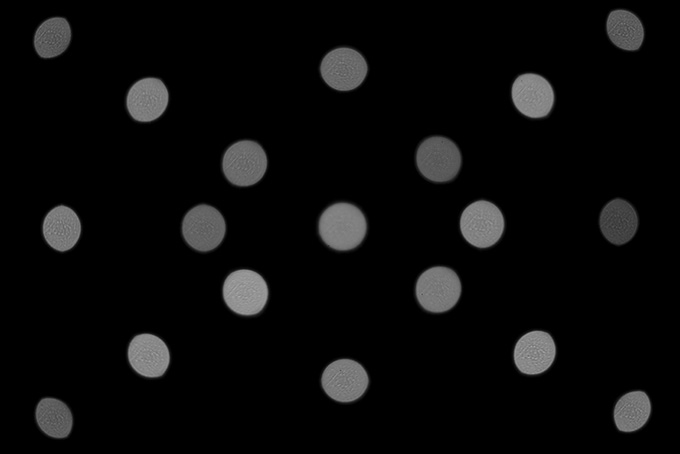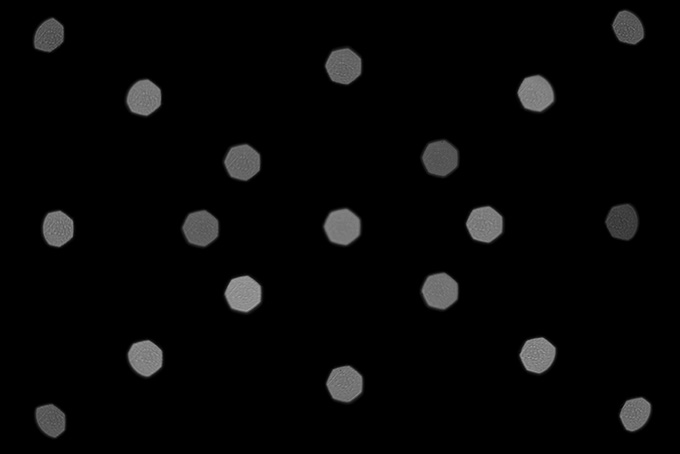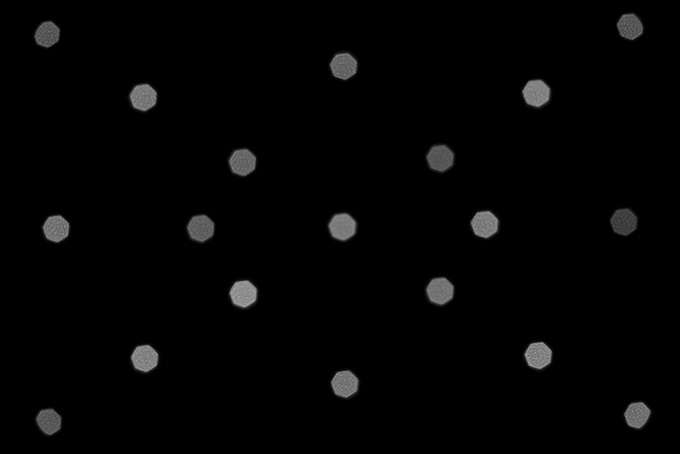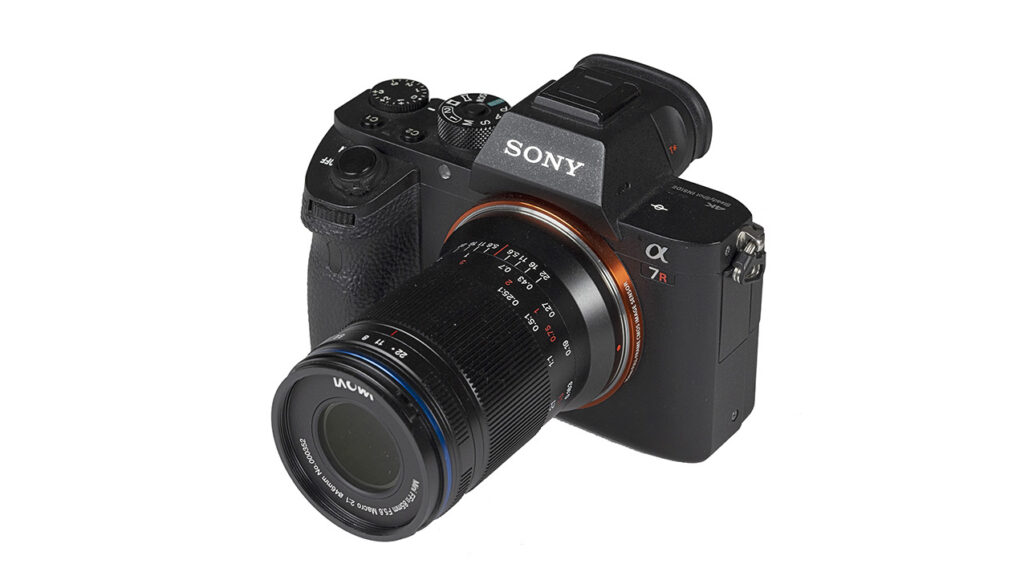Review by Klaus Schroiff, published December 2021
Introduction
Laowa is playing it fancy again – not in terms of speed or focal length but in making things as small as possible. This time they surprised us with the Laowa 85mm f/5.6 2x Ultra Marco APO, a full-format lens for mirrorless systems only. And it is tiny with a length of just 81mm and a weight of merely 291g (to 310g depending on the target system). Some may frown upon the thought of an f/5.6 lens but at least for macro photography, it makes absolute sense. Anything faster than this is more on the exotic side in the scope of this purpose. On the downside, it is less useful for generic applications. e.g. A more conventional 100mm f/2.8 is also often good enough for portraits unless you are really ambitious whereas you wouldn’t really use the Laowa lens for this purpose. Price-wise, the Laowa is relatively expensive at $449-499 (USD) – this is about the same as its DSLR-centric, in-house cousin, the 100mm f/2.8 2x Ultra Macro APO. The 100mm f/2.8 is, however, twice as heavy and twice as long.
As far as build quality is concerned, the 85mm f/5.6 2x Ultra Marco APO is similar to other Laowa lenses that we tested so far. It’s an all-metal construction with a very smooth focus ring and a “clicked” aperture ring (full stops only). The lens uses an inner focusing system thus the physical length remains the same across all focus distances. Please note, however, that the focal length changes towards shorter focus distances – this is typical for such a design. While it certainly feels sturdy, it’s worth noting that there is no weather-sealing. A barrel-shaped lens hood is provided.

Unfortunately, the Laowa lens is still all-manual – thus there is no AF, no camera-controlled aperture, and no EXIF data. For standard photography, this may be an annoyance but it’s usually not a showstopper for macro photographers.
| Specifications | |
|---|---|
| Optical construction | 13 elements in 9 groups inc 3x ED elements |
| Number of aperture blades | 7 |
| min. focus distance | 0.163m (max. object magnification 2:1) |
| Dimensions | 53x81mm |
| Weight | 291g |
| Filter size | 46mm |
| Hood | barrel-shaped (bayonet mount, supplied) |
| Other features | – |
| Mount | Sony FE as tested, (Canon RF, Leica M, Nikon Z) |
Distortion
The Laowa 85mm f/5.6 2x Ultra Macro APO is basically free of image distortions – even without auto-correction (which isn’t available with this lens anyway).

Vignetting
The vignetting is fairly uniform across the aperture range with a light falloff of about 1EV (f-stop) at f/5.6 and just slightly less than that when stopped down.

MTF (resolution)
The Laowa lens does a good job in terms of resolution without being able to excel. One reason for this is that the lens is diffraction-limited at f/5.6 already (on high megapixel sensors at least). The typical peak quality on full format cameras tends to be around the f/4 mark and f/5.6 is obviously slower than this. However, the quality is quite uniform between f/5.6 and f/11 with a very good center and a good to the very-good outer image field. f/16 remains usable but f/22 should be avoided. Please note that this is for the quality at conventional focus distances. The results will differ with extreme close-ups but that’s nothing we can reasonably test in a formal procedure.
The field curvature is low. The centering quality of the tested sample was Ok. A perfect sample would have probably been a little better at f/5.6.
Please note that the MTF results are not directly comparable across the different systems!
Below is a simplified summary of the formal findings. The chart shows line widths per picture height (LW/PH) which can be taken as a measure for sharpness. If you want to know more about the MTF50 figures you may check out the corresponding Imatest Explanations.

Chromatic Aberrations (CAs)
Lateral CAs (color shadows at the image borders) are very low between f/5.6 and f/11 but increase at f/16 and, more so at f/22. However, the CAs are still moderate even at f/22.

Bokeh
If you are into macro photography it is almost inevitable that most of your scene is blurred due to the shallow depth-of-field. Even the 85mm f/5.6, while not impressive in this respect at conventional focus distances, qualifies here – especially when approaching its max magnification of 2:1 where the DOF is hair-thin. So how is the quality of the bokeh (out-of-focus blur)? It’s a bit of a mixed bag.
As you can see below, the highlight rendering isn’t really ideal. While circular at f/5.6, the discs become edgy at f/8 already. And the inner zone of the discs is fairly busy.

When looking at the full image field, you have a medium-sized zone in the center where the circular shape is maintained before highlights are transitioning to ellipsoid shapes at the borders and corners.
At f/5.6 the overall characteristic is still quite pleasant though. Stopped down to f/8, the outer “discs” look rather distorted due to the combination of the edgy and ellipsoid shape.
The “discs” are more uniform from f/11 onward.



While the highlight rendering didn’t impress, the quality of the general blur is very smooth in the image background (shown to the left below). The foreground is just a tad less silky but still very good.

Bokeh Fringing / LoCA
Laowa is advertising the lens as an “APO” lens hinting that LoCA (axial CAs) are well controlled. We wouldn’t fully sign this off – below is a sample image with crops illustrating that purple/green color fringing is still present at f/5.6.

Sample Images
Competition
The Laowa 85mm f/5.6 2x Ultra Marco APO is shown to the left below. Its most obvious competitor is the Sony FE 90mm f/2.8 OSS macro (center). The Sony lens is certainly more versatile given its higher speed, AF and OSS but it also costs twice as much, and it only offers a max magnification ratio of 1:1. The Laowa 100mm f/2.8 2x Ultra Macro APO (to the right) is in the same price league but it’s a much bigger lens as you can see. Being a DSLR lens by origin, it is also quite long when mounted on a mirrorless body. More options (not shown) include the Sigma 105mm f/2.8 DN ART macro and the Tokina AF 100mm f/2.8 macro – both featuring AF. Especially the Tokina is very competitively priced (reads – it’s even more affordable). And all these competitors are great lenses – making it hard for the 85mm f/5.6 to find its niche.

Visual comparison courtesy of camerasize.com.
The Laowa 85mm f/5.6 2x Ultra Marco APO is a good lens. It delivers a predictable performance across its aperture range. At medium aperture settings, it's pretty sharp without being truly outstanding. Diffraction takes its usual toll at small apertures and it's advisable to avoid f/22 at least. That's also a good idea because of CAs. They are very low up to f/11 but increase beyond - albeit not to a worrisome degree. Image distortions are basically absent as they should be with a macro lens. The quality of the bokeh is a bit of a mixed back. Out-of-focus highlights aren't ideal whereas the out-of-focus transition zone is rendered nicely.
The build quality is perfectly fine with the usual caveats of an all-manual lens. The lens body is made of metal including the lens hood and we especially like the inner focusing system. On the downside, there's still no electronic coupling thus you'd have to live without AF, EXIF data, and no camera-controlled. This is not a drama for a macro lens but it's hindering Laowa from entering the mainstream market.
The question of the day is probably where to find the niche for this kind of lens. Its primary value proposition is the minimal size and low weight. Some may also appreciate the ability to focus down to a maximum magnification of 2:1. If these are your priorities, you may accept the lack of speed and the all-manual nature. At almost $500USD, we wouldn't call it a steal though.
-
Optical Quality
-
Build Quality
-
Price / Performance


